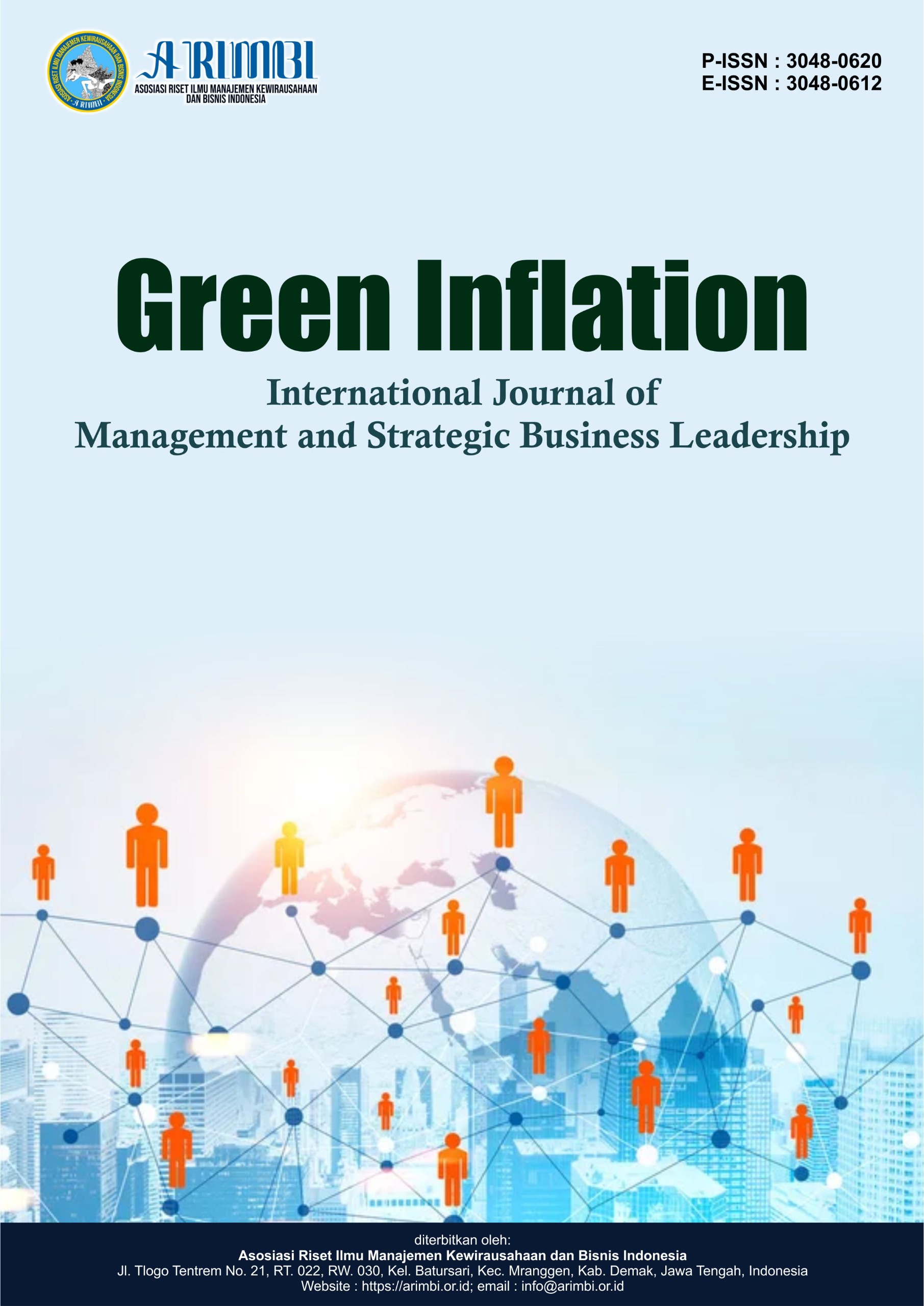The Influence of Club Image, Sponsorship, and Fan Loyalty on Football Merchandise Purchase Intention
DOI:
https://doi.org/10.61132/greeninflation.v2i3.505Keywords:
Club Image, Sponsorship, Fan Loyalty, Purchase Intention, Bali United.Abstract
This study examines the influence of club image, sponsor factors, and fan loyalty on the purchase intention of official merchandise among Bali United supporters. The focus of the research is to understand how these three factors contribute to driving merchandise sales in sports marketing, with the aim of providing insights that can improve the club's revenue strategies. By adopting a quantitative approach, primary data were collected from 200 respondents who are active supporters of Bali United, using an online questionnaire. The data were analyzed using multiple linear regression to evaluate the significance and direction of the relationships between the variables. The results reveal that each of the three factors—club image, sponsor factors, and fan loyalty—has a positive and significant effect on the intention to purchase official merchandise. This indicates that a stronger perception of the club's brand, relevant and reputable sponsorships, and higher levels of fan commitment all contribute to an increased likelihood of supporters purchasing merchandise. The findings highlight the synergistic role of branding, partnerships, and community engagement in influencing consumer behavior within the sports fandom context. A positive image of the club helps build trust and emotional connection, while sponsor factors, such as the alignment of brands with the club's values, enhance the overall appeal of the merchandise. Moreover, fan loyalty acts as a significant driver, as loyal fans are more likely to invest in merchandise as a way to support their club. In conclusion, the study emphasizes that effective brand management, strategic alignment of sponsorships, and nurturing fan loyalty are crucial for maximizing merchandise sales potential. Sports teams can leverage these factors to enhance fan engagement and improve their revenue generation strategies, making merchandise sales a valuable part of their business model.
Downloads
References
Washington, R. E. (2010). Globalization and football. Sociology, 39(5), 569-571. https://doi.org/10.1177/0094306110380384q
Bauer, J., Sauer, M., & Exler, E. (2008). Brand image and fan loyalty. Sport Management, 22(2), 205-226. https://doi.org/10.1123/jsm.22.2.205
Smith, M., & Aaker, D. A. (1992). Managing brand equity. Mark, 56(2), 125. https://doi.org/10.2307/1252048
Zhang, X. (2015). Brand image's effect on consumer behavior. Management, 03(01), 58-62. https://doi.org/10.4236/ojbm.2015.31006
Kim, Y., & Lee, W. (2019). A study on the relationship between brand identity salience and brand at-tachment. Humanities, 10(3), 48. https://doi.org/10.22143/HSS21.10.3.48
Melovic, B., Rogic, S., Smolovic. Dudic, M., & Gregus, S. (2019). Sport sponsorship perceptions on purchasing decision. Sustainability, 11(22), 6389. https://doi.org/10.3390/su11226389
Adámik, R., Varmus, M., & Kubina, M. (2017). Social media on the reputation of the sports club. TechCrunch. https://techcrunch.com/2016/12/19/facebook-status-background
Varea-Calero, A. D., Rejón-Guardia, F., Hurtado, J. M., & Berbel-Pineda, J. M. (2025). Impact of sport sponsorship. Sport, 15(2), 176-203. https://doi.org/10.1108/SBM-09-2024-0134
Bae, J.-S., Chiu, W., & Nam, S.-B. (2021). Sport fans' price sensitivity based on loyalty. Sustainability, 13(6), 3361. https://doi.org/10.3390/su13063361
Kim, J., & Trail, G. (2010). Constraints and motivators. Sport, 24(2), 190-210. https://doi.org/10.1123/jsm.24.2.190
Kural, S., & Karatas, I. (2023). Investigation of the effects of fans' club image perceptions. Sport Sci-ences.
Palau, R., Matute, M., & Forgas-Coll, S. (2022). The roles of team identification in fans' intentions to purchase. Sport Management, 25(5), 791-819. https://doi.org/10.1080/14413523.2021.1991676
Scola, Z., Dwyer, B., & Gordon, B. S. (2023). Time will tell. Sport, 13(5), 548-562. https://doi.org/10.1108/SBM-12-2022-0111
Stander, F. W. (2016). Engagement as a source of positive consumer behaviour. South African Journal, 38(2), 187-200.
Merai, R., & Nimkar, N. (2020). Effect of licensed merchandise on fan engagement. Ann, 23(17). https://doi.org/10.36295/ASRO.2020.231743
Schiffman, L. G., & Kanuk, L. L. (2015). Consumer Behavior (12th ed.). New Jersey: Global Edition.
Ajzen, I. (2011). The theory of planned behaviour. Psychol Health, 26(9), 1113-1127. https://doi.org/10.1080/08870446.2011.613995
Kotler, P., & Keller, K. L. (2012). Marketing Management. USA: Pearson.
Arai, A., Ko, Y., & Kaplanidou, K. (2013). Athlete brand image. European Sport, 13(4), 383-403. https://doi.org/10.1080/16184742.2013.811609
Beccarini, A., & Ferrand, A. (2006). Factors affecting soccer club season ticket holders' satisfaction. European Sport, 6(1), 1-22. https://doi.org/10.1080/16184740600799154
Meenaghan, J. A. (1983). Commercial sponsorship. Eur Mark, 17(7), 5-73. https://doi.org/10.1108/EUM0000000004825
Cornwell, T. B. (2014). Sponsorship in Marketing. Routledge. https://doi.org/10.4324/9781315816371
Speed, R., & Thompson, P. (2000). Determinants of sports sponsorship. Acad Mark Sci, 28(2), 226-238. https://doi.org/10.1177/0092070300282004
Hsiao, H., Tang, C., & Su, C. (2021). An empirical exploration of sports sponsorship. Front Psychol, 12, Jun. https://doi.org/10.3389/fpsyg.2021.677137
Funk, D., & James, J. (2001). The psychological continuum model. Sport Management, 4(2), 119-150. https://doi.org/10.1016/S1441-3523(01)70072-1
Wann, Melnick, Russell, & Pease. (2023). Sport fans. Psycnet.apa.org.
Heere, B., & James, J. (2007). Sports teams and communities. Sport Management, 21(3), 319-337. https://doi.org/10.1123/jsm.21.3.319
Doyle, K., Kunkel, T., & Funk, D. (2013). Sports spectator segmentation. Sports Marketing, 14(2), 20-36. https://doi.org/10.1108/IJSMS-14-02-2013-B003
Pradhan, D., Malhotra, S., & Moharana, R. (2019). When fan engagement with club matters in spon-sorship. Brand Management.
Chadwick, S. (2022). GCC football fans and their engagement. Oxford University Press, 253-280. https://doi.org/10.1093/oso/9780197659670.003.0011
Sugiyono. (2016). Metode Penelitian. Bandung: PT Alfabeta.
Hair Jr., J. F. (2010). Multivariate Data. New Jersey: Pearson.
Ghozali, I. (2016). Aplikasi Multivariete SPSS 23. Semarang: UNDIP.
Oralkan, G. (2019). Narrative strategies. In Handbook of Research on Narrative Strategies (pp. 292-301). https://doi.org/10.4018/978-1-5225-9790-2.ch025
Cornwell, T. B. (2020). Sponsorship in Marketing. Routledge. https://doi.org/10.4324/9780429325106
Biscaia, R., Trail, G., Ross, S., & Yoshida, M. (2017). A model bridging team brand experience. Sports Marketing, 18(4), 380-399. https://doi.org/10.1108/IJSMS-07-2016-0038
Weeks, K., Humphreys, M., & Cornwell, T. B. (2018). Why consumers misattribute sponsorships to non-sponsor brands. Exp Psychol Appl, 24(2), 125-144. https://doi.org/10.1037/xap0000159
Fistanto, E., Fitri, M., Hamidi, R., & Kusmaedi, R. (2022). Studi komparasi loyalitas fans sepakbola di Indonesia dan Korea Selatan. Image, 11(2), 94-107. https://doi.org/10.17509/image.v11i2.49086
Morgan, R. M., & Hunt, S. D. (1994). The commitment-trust theory of relationship marketing. Mark, 5(8), 20-38. https://doi.org/10.1177/002224299405800302
Downloads
Published
How to Cite
Issue
Section
License
Copyright (c) 2025 Green Inflation: International Journal of Management and Strategic Business Leadership

This work is licensed under a Creative Commons Attribution-ShareAlike 4.0 International License.




